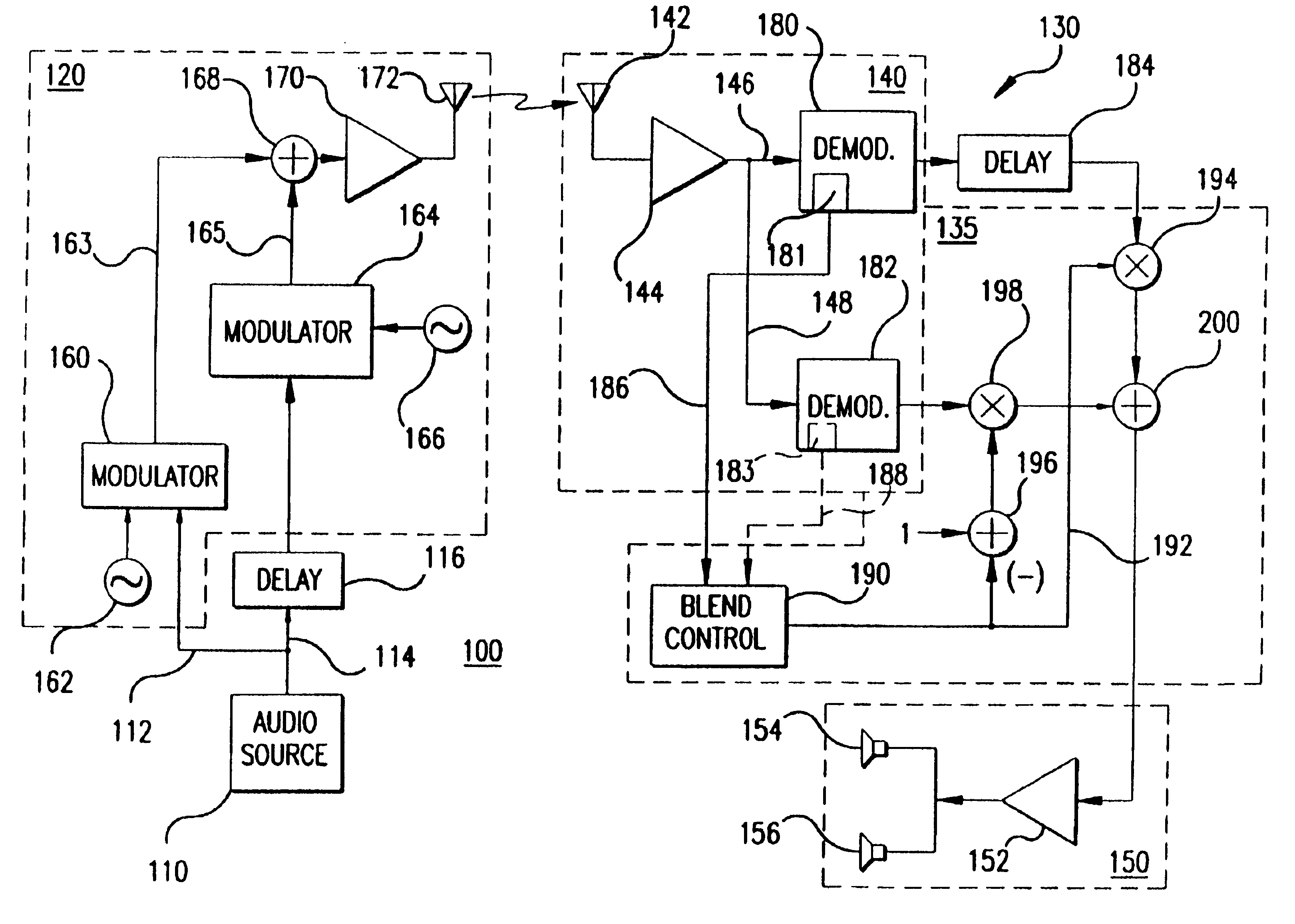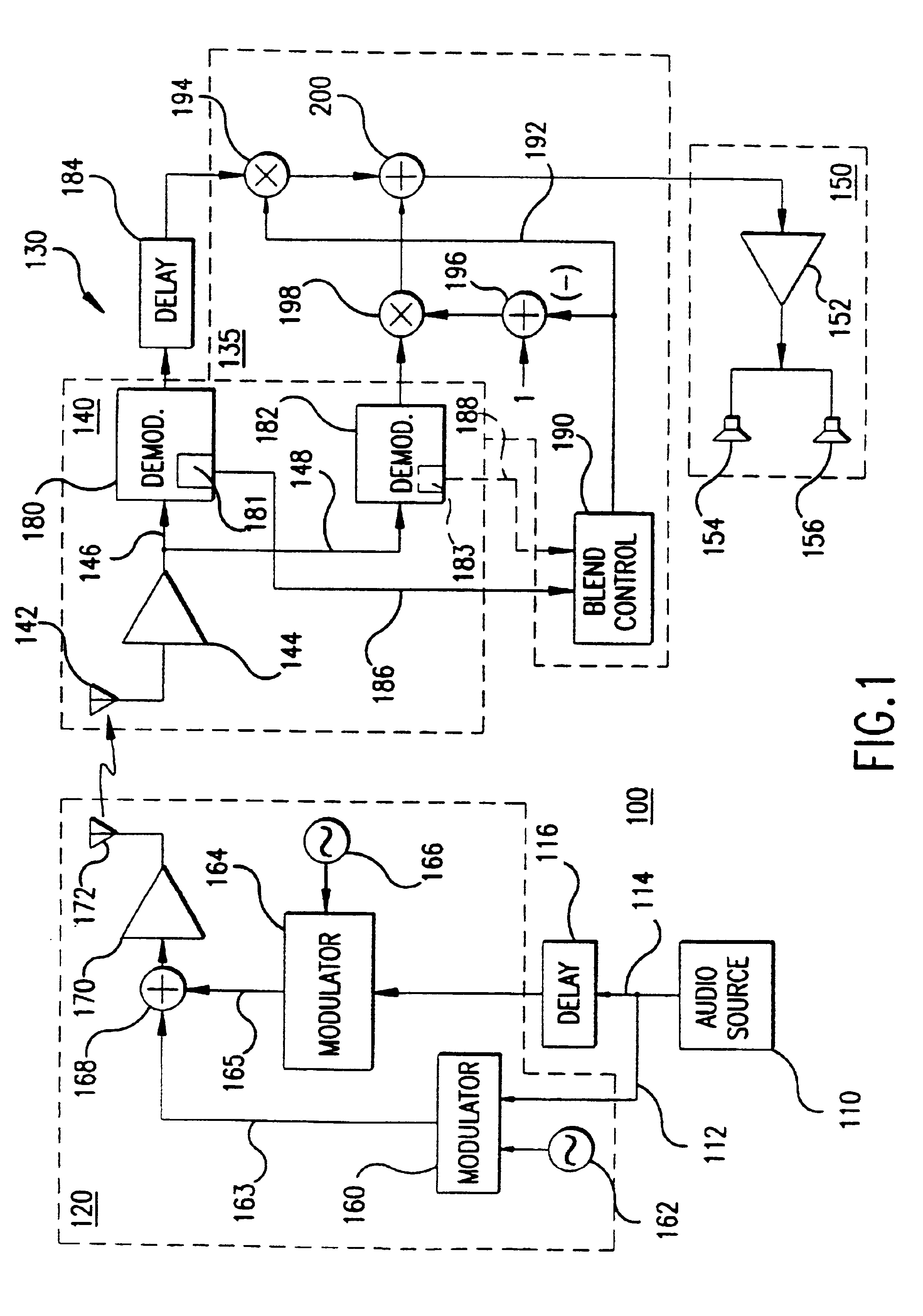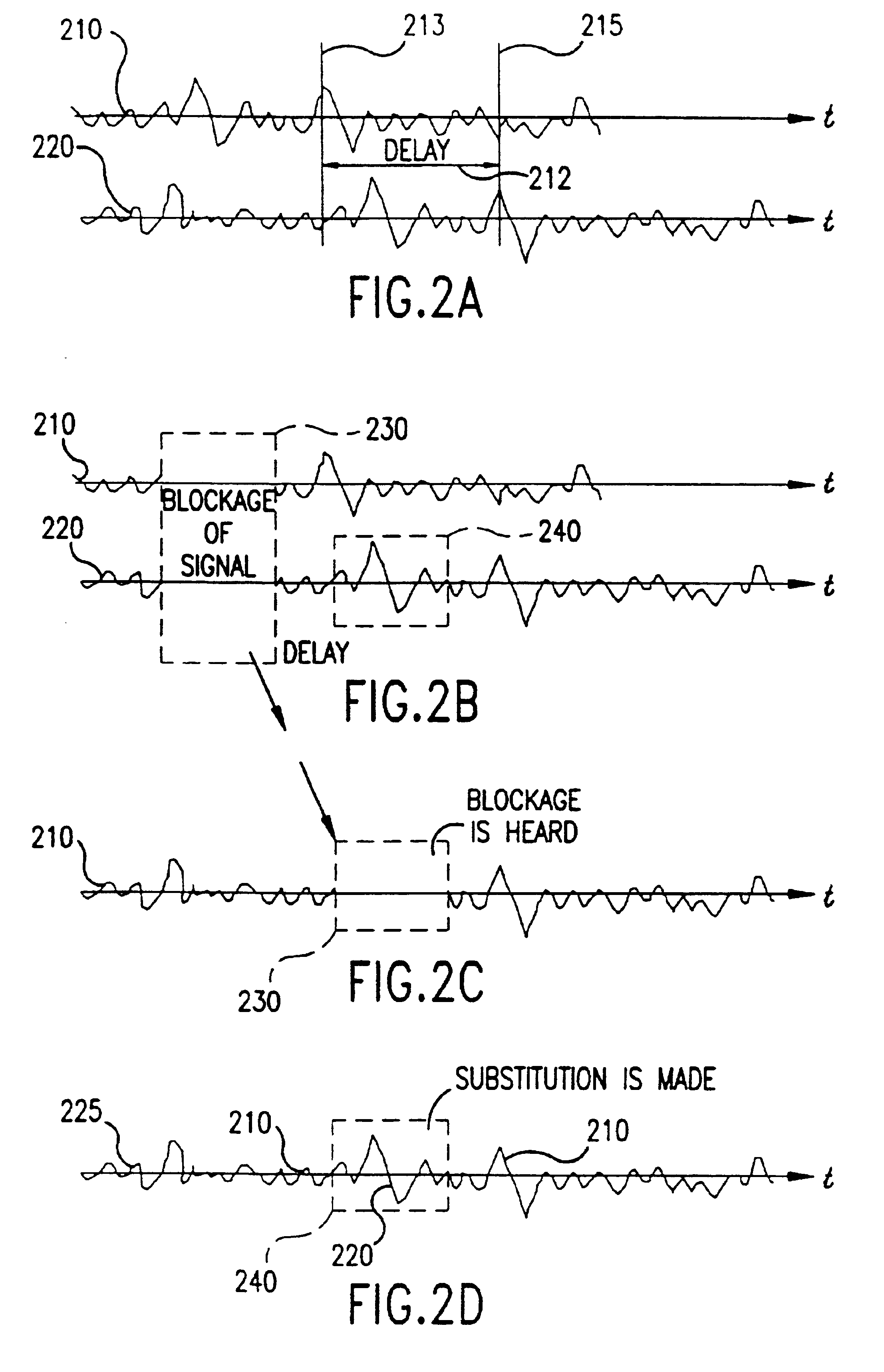System and method for mitigating intermittent interruptions in an audio radio broadcast system
- Summary
- Abstract
- Description
- Claims
- Application Information
AI Technical Summary
Benefits of technology
Problems solved by technology
Method used
Image
Examples
Embodiment Construction
[0023]Referring to FIGS. 1-9, and particularly to FIG. 1, there is shown system 100 for mitigating intermittent interruptions in an audio radio broadcast system. Conventionally, FM radios mitigate the effects of fades or partial blockages by transitioning from full stereophonic audio to monophonic audio. Some degree of mitigation is achieved because the stereo information which is modulated on a subcarrier, requires a higher signal-to-noise ratio to demodulate to a given quality level than does the monophonic information which is at the base band. However, there are some blockages which sufficiently “take out” the base band and thereby produce a gap in the reception of the audio signal. System 100 is designed to mitigate even those latter type outages in conventional analog broadcast systems and particularly adapted for use in digital audio broadcast (DAB) systems, where such outages are of an intermittent variety and do not last for more than a few seconds. To accomplish that mitig...
PUM
 Login to View More
Login to View More Abstract
Description
Claims
Application Information
 Login to View More
Login to View More - R&D
- Intellectual Property
- Life Sciences
- Materials
- Tech Scout
- Unparalleled Data Quality
- Higher Quality Content
- 60% Fewer Hallucinations
Browse by: Latest US Patents, China's latest patents, Technical Efficacy Thesaurus, Application Domain, Technology Topic, Popular Technical Reports.
© 2025 PatSnap. All rights reserved.Legal|Privacy policy|Modern Slavery Act Transparency Statement|Sitemap|About US| Contact US: help@patsnap.com



